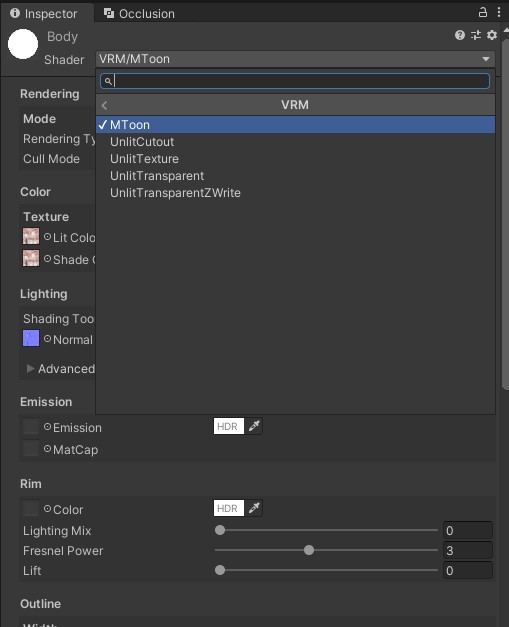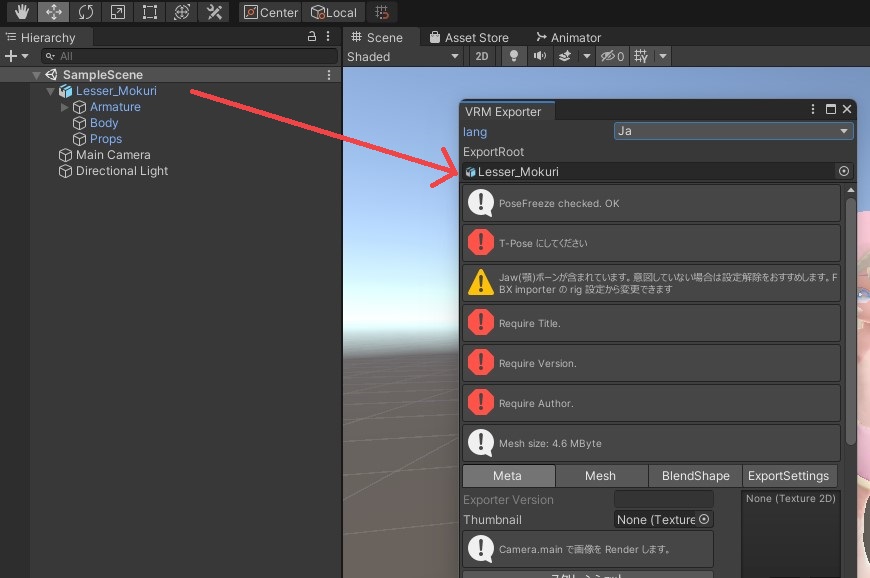How to Create VRM File
You will need to convert your exhibit model into VRM format to submit the file into Vket Cloud venue via web.
VRM is a data format to mainly deal with humanoid avatar data aimed for VR apps. The format is based on a standardized 3D data format called glb.
By using the VRM as a shared format, you can enter the worlds of various apps in the same avatar.
In the Vket we are using VRM to set the models in the browser venue “VketCloud”.
What can it be used for?
Basically, you can use the file on any VRM applications.
The file format is compatible with streaming apps for Vtubers, avatar photography apps, and certain VRSNS.
How to create a VRM file
VRM files can be created by converting the original file with “UniVRM” on Unity.
Here we will go over the workflow.
*For details, please refer to the official reference of the VRM consortium.
https://vrm.dev/en/how_to_make_vrm/
1. Import “UniVRM" into the Unity
Firstly, download the UniVRM. Since the latest version may not be stable, we recommend to use versions flagged as Latest Stable by the developers.

2. Open the Unity project
Before opening, please check whether the version supports UniVRM. In the case of UniVRM-0.66, as long as the version is later than 2018.4.LTS you may use the software without issues.

3. Import the downloaded UniVRM into the Unity project
For the process of importing assets into Unity project, please refer to the submission guideline.
4. Import model data such as FBX and texture
- Import all necessary files for your model into the Unity.
- Set fbx material of the model.
- In VRM you may only use 3 kinds of shaders: MToon, Unlit, or Standard. If you are already using different shaders, please replace them with either one of MToon, Unlit, or Standard.

5. Set the model as Humanoid
Set Animation Type to Humanoid.

6. “Normalize” the model
We will then temporarily turn the adjusted model into VRM and make necessary settings.
- Place the imported model on the scene.

- Open [VRM0] > [Export UniVRM-x.xx.x(version number)] (or [VRM]>[Export Humanoid]) from the menu.

- You will see the VRM Exporter. Drop the model from the Hierarchy to [ExportRoot].

7. Input your license information
Title, Version and Author are mandatory. Once all of these information are filled, you can click "Export". Optionaly, you may set other parameters and avatar thumbnail.
8. Export VRM
Export it. All Vrm files exported will be saved to the location of your choice.

- If there were any other error you may not be able to export. Check the error message and readjust based on the official reference.
https://vrm.dev/en/how_to_make_vrm/convert_from_humanoid_model/
9.Adjust the model
Here, we will readjust the “normalized” model to completion.
- Reimport the Exported VRM file to the Unity.
If you have exported the vrm file under [Unity project under work]>Asset vrm, you do not need to reimport the file.
- Place the VRM mocel on the scene.

You will find a Prefab upon import. Drag and drop it into the scene. You may deactivate the fbx and other objects in the scene as you see fit.
- Select the VRM model and make various settings from the inspector, like the title, author and license information.

- Other than that you may also set expressions and movable parts at this moment. For details please refer to the official reference.
https://vrm.dev/en/how_to_make_vrm/setup_vrm/
10.Make final export of the VRM model
Once the adjustments are done, select the VRM model and select[VRM0] > [Export UniVRM-x.xx.x(version number)] from the menu again.

Export with the VRM Exporter and save at the location of your choice.
Now your VRM file is complete!
Thank you!